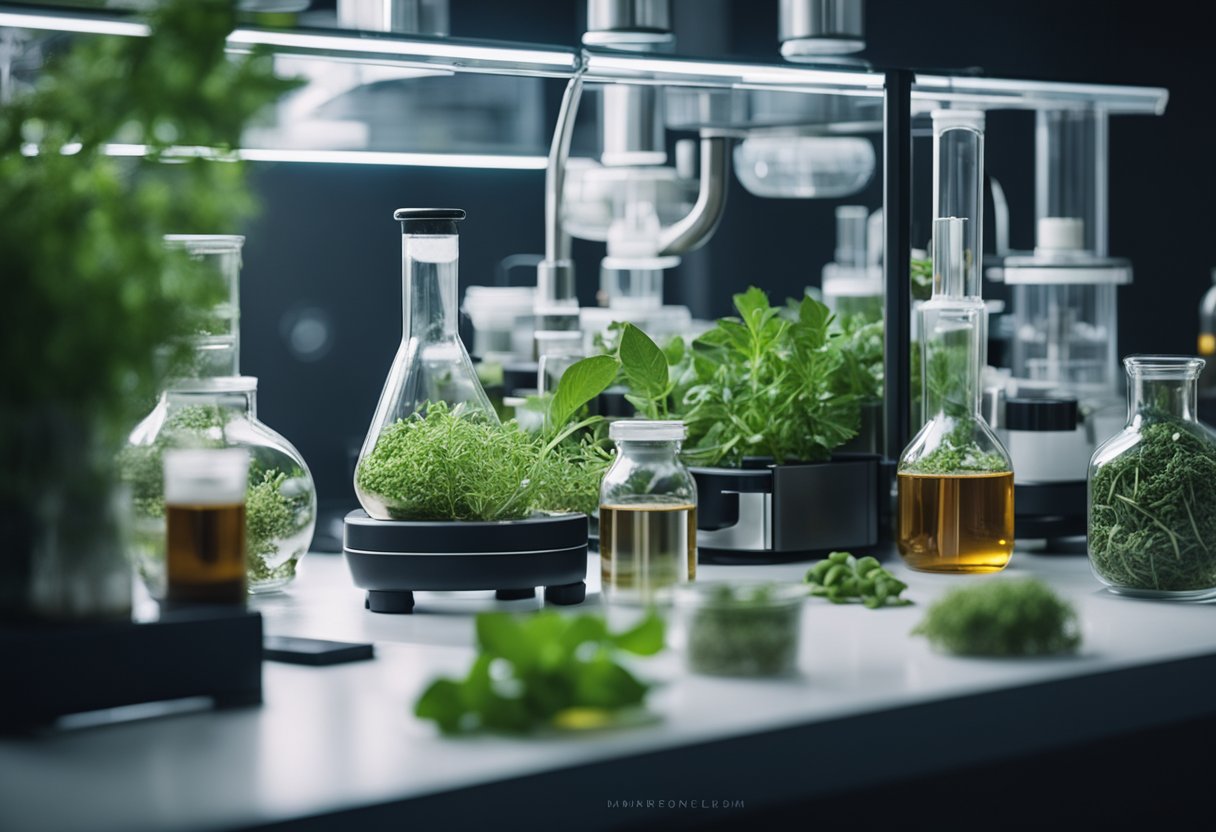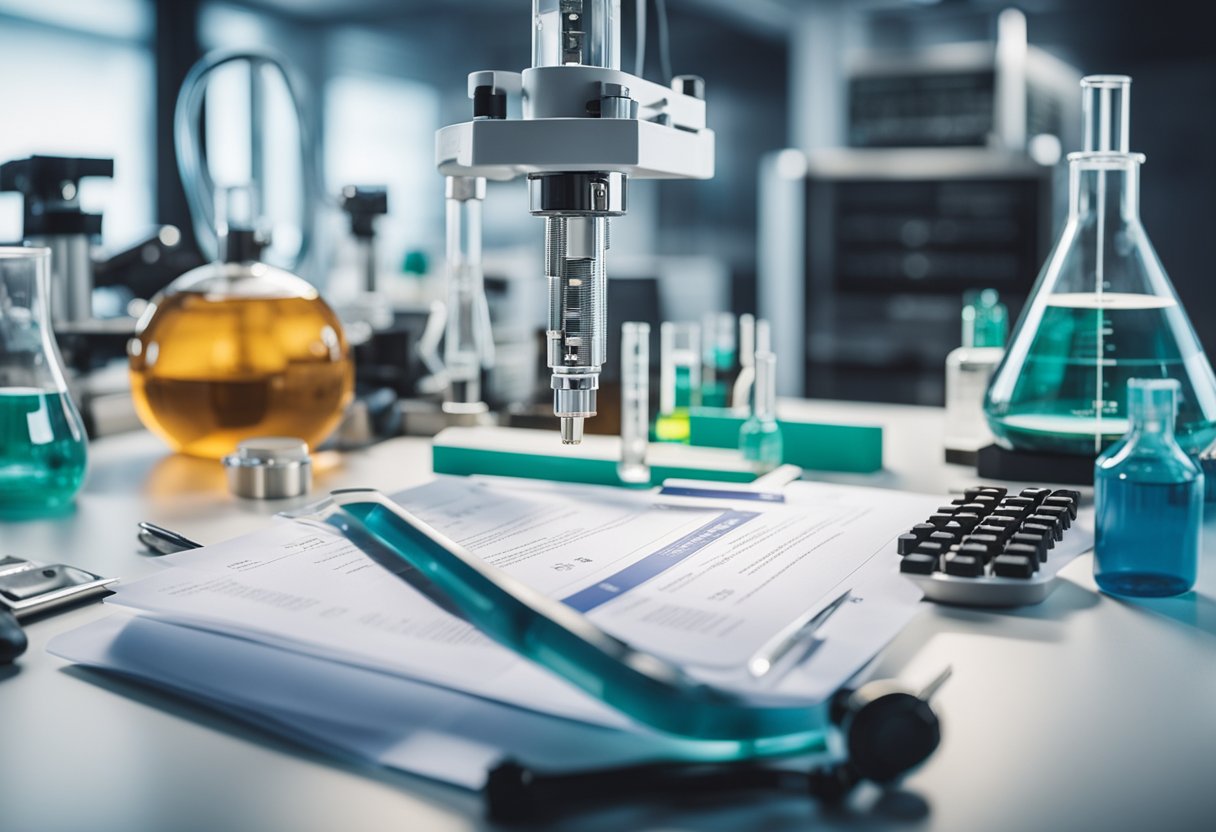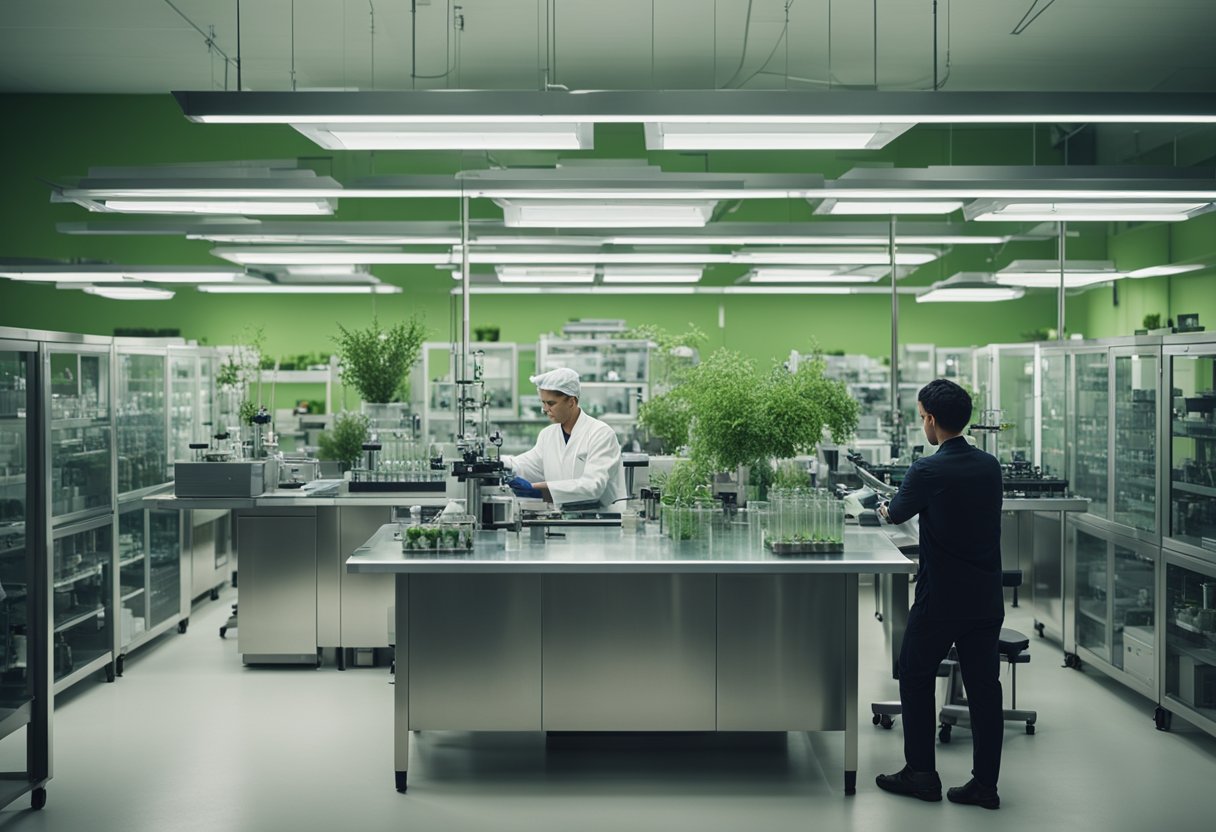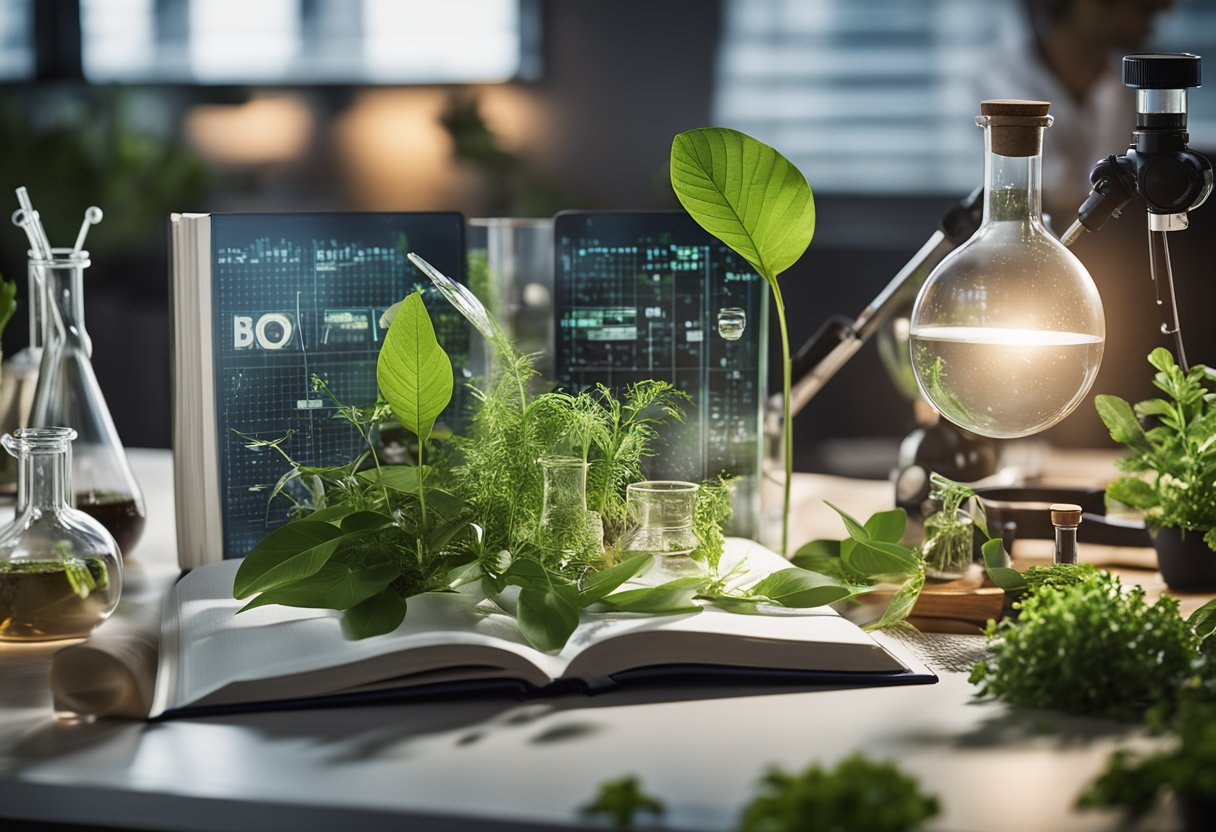Biohacking and Longevity: Merging Ancestral Wisdom with Modern Innovations

Updated On: April 04, 2024 by Raghda Elsabbagh
Exploring the intersection of ancient wisdom and contemporary science, biohacking and longevity are capturing the attention of people worldwide. This convergence harnesses centuries-old practices alongside cutting-edge technologies, aiming to improve our quality of life and extend our years. Traditional methods like meditation and fasting have found new significance through this lens, while modern advances in genetics and biotechnology offer unprecedented possibilities for enhancing human health.

We see this synergy as a way to optimise well-being, integrating the best of both worlds. Individuals can personalise strategies to boost their vitality and potentially slow the ageing process by fusing time-honoured traditions with contemporary scientific research. The scientific community is continuously exploring how factors like lifestyle, diet, and the environment affect our longevity, with biohackers taking this knowledge into their own hands to experiment with self-improvement.
Table of Contents
Historical Context of Biohacking

In tracing the lineage of biohacking, we observe a merger of ancient wisdom with state-of-the-art scientific advancement. This narrative tells us how traditional practices laid the foundation for what we now recognise as biohacking.
Traditional Medicine Roots
Biohacking, in its essence, isn’t a novel concept; it’s deeply rooted in traditional medicine. Systems like Ayurveda have been in practice for thousands of years, advocating for a balanced diet and herbal remedies as methods to harness one’s life force or “prana”. The notion of optimising the human body and its capabilities, a core principle of biohacking, echoes the aims of these time-honoured health sciences.
Evolution of Biohacking Practices
The practice of biohacking has transformed dramatically since its days, shadowed in tradition. The modern biohacker employs a variety of tools and techniques ranging from nootropics to gene editing, representing a tangible intersection of art and science. Biohacking today is as much a philosophical pursuit as it is a practical one. We find individuals leveraging technology to enhance lifespan and cognitive abilities, signifying a bold leap from the fundamental roots of Ayurveda and similar practices into the realm of advanced scientific endeavours.
The Science of Aging
In this section, we explore the intricate processes that govern how and why we age, focusing on the roles of genetic factors and environmental influences.
Genetic Factors
Our understanding of ageing must begin at the cellular level with DNA. As researchers delve into the mysteries of our genes, they have uncovered that segments of DNA, known as telomeres, shorten each time a cell divides. This shortening is linked to the ageing process and is influenced by the activity of mitochondria, the powerhouses of the cell. Mutations in mitochondrial DNA can accelerate the deterioration of cellular functions. Moreover, specific genes have been identified, such as those related to the sirtuin family, which seem to play a pivotal role in longevity and stress resistance.
Environmental Influences on Aging
The environment we live in exerts a considerable impact on ageing. External factors like UV radiation, pollution, and diet can lead to DNA damage and oxidative stress, influencing the rate at which we age. Conversely, lifestyle choices that include a balanced diet, regular exercise, and adequate sleep can support mitochondrial health and promote DNA repair mechanisms, thus potentially slowing the ageing process.
Biohacking Techniques for Longevity
We’re delving into practical biohacking techniques that can potentially enhance longevity. You can fine-tune your body’s functions by integrating specific dietary strategies, exercise regimes, and sleep optimisation to promote a healthier, longer life.
Dietary Interventions
Through biohacking our diets, we aim to exert greater control over our biological processes. Intermittent fasting is a key strategy practised by many biohackers, which can activate cellular repair processes. Additionally, incorporating specific fasting periods can improve metabolic health. It’s crucial we include diet compositions rich in nutrients and antioxidants, which may fend off age-related decline.
Exercise and Physical Activity
Exercise is a cornerstone of any biohacking toolbox. Physical activity, particularly when it incorporates both aerobic and resistance training, plays an essential role in maintaining and improving overall health. Regular exercise can drive numerous biological advantages, such as enhancing heart health, improving insulin sensitivity, and maintaining muscle mass — all of which are fundamental for longevity.
Sleep Optimisation
The final pillar in our longevity biohacking strategy is sleep optimisation. A restorative night’s sleep is one of the most significant contributors to health and longevity. Sleep plays a critical role in memory consolidation, emotional regulation, and rejuvenation of the body’s cells. We ensure that we adhere to a consistent sleep schedule and take steps to create an environment conducive to quality sleep, incorporating techniques such as reduced light exposure before bedtime and maintaining a cool, calm sleeping space.
Cutting-edge Technologies in Biohacking
In our exploration of biohacking, we encounter technologies that are fundamentally altering our approach to personal wellness and scientific exploration. Key among these are wearable devices and gene editing, which are at the forefront of this innovative field.
Wearable Devices
Wearable technology is increasingly becoming an integral part of biohacking for health optimisation. Smartwatches and fitness trackers stand out as popular tools that provide us with real-time health metrics. These devices monitor a range of physiological parameters, such as heart rate, sleep patterns, and physical activity levels. By wearing these gadgets, we gain insights into our daily health and can make more informed decisions about lifestyle modifications to improve longevity.
Gene Editing and Stem Cells
The advancements in genetics have brought about pioneering methods like CRISPR gene editing. This powerful technology allows for precise modifications to DNA, opening up possibilities for the treatment and prevention of genetic disorders. Meanwhile, stem cells have remarkable regenerative potential, leading to breakthroughs in repairing and replacing damaged tissues
The Role of Mindfulness and Mental Health

In exploring the intersection of biohacking and longevity, we recognise the substantial influence of mindfulness on mental health, particularly in stress management and enhanced cognitive function.
Stress Reduction Methods
Mindfulness-based interventions are emerging as powerful stress-reduction methods. These practices help us create a state of calm awareness of our own thoughts, feelings, and environment, which, in turn, can reduce the physiological and psychological strain caused by stress. Regular engagement in mindfulness exercises has been shown to diminish symptoms of anxiety and other stress-related disorders significantly. Simple techniques such as deep breathing, progressive muscle relaxation, and guided imagery are accessible tools for integrating mindfulness into our daily lives to cope with stress.
The Neuroscience of Stress: Emerging research in neuroscience indicates that mindfulness can alter brain patterns associated with stress. It is believed to down-regulate the amygdala, the brain’s ‘fight or flight’ centre, which is activated during stress responses.
Meditation and Cognitive Function
Meditation is another pillar of wellness in our mental performance toolkit. By training our minds through various forms of meditation, we can enhance cognitive function, including attention, memory, and processing speed. Studies show that consistent meditation can lead to structural changes in the brain that bolster these functions, suggesting a profound impact on our neurological health.
Meditation Practices: Different meditation styles, such as focused attention, open monitoring, and loving-kindness meditation, each contributes uniquely to cognitive and emotional capacities. Focused attention meditation, for instance, is akin to weight lifting for the mind, improving attentional muscle through repeated practice.
Through our exploration, we’ve seen that mindfulness and meditation are not merely transient trends in the landscape of health. They are rooted in extensive clinical research and traditional practices, reflecting the harmonious blend of ancient wisdom and modern scientific understanding in our pursuit of longevity and optimal mental health.
Supplements and Nootropics
As we explore biohacking and longevity, supplements and nootropics stand out for their potential to bolster our health and cognitive functions. The careful integration of these elements into our routine may contribute to better mental clarity, enhanced performance, and overall well-being.
Vitamins and Minerals
Among the cornerstones of biohacking is the strategic use of vitamins and minerals. Our focus on these essential nutrients reflects their importance in supporting a range of bodily processes, from maintaining immune function to enhancing energy metabolism. For example, Vitamin D is crucial for bone health and immune response, while magnesium plays a significant role in over 300 enzymatic reactions in the body, including those that govern muscle and nerve function.
- Vitamin D: Essential for calcium absorption and bone health.
- Magnesium: Involved in energy production and contributes to the structural development of bones.
- Zinc: Supports the immune system and plays a role in cell division.
Performance Enhancing Compounds
When it comes to bolstering cognitive abilities and physical performance, performance-enhancing compounds, like nootropics and peptides, are often highlighted. Nootropics, known colloquially as ‘smart drugs’, encompass a broad range of substances that may improve cognitive function. Research has been focused on establishing new potential nootropics derived from both synthetic and natural products, leading to cognitive enhancements such as improved memory, creativity, motivation, and attention.
- Nootropics: (Recent Molecular Enhancement) include substances like omega-3 fatty acids, which support brain health.
- Peptides: Short chains of amino acids that can act as signalling molecules within the body and influence a variety of physiological processes. They have garnered interest for their role in anti-ageing and tissue repair.
Regulatory and Safety Considerations

As we delve into the realm of biohacking and long-term well-being, it is imperative that we address the regulatory and safety considerations that are integral to the practice. These include navigating the complex landscape of ethics in biohacking and understanding the scope of governmental oversight.
Ethics and Biohacking
The intersection of biohacking and ethics raises vital questions about the responsible use of technology to modify human biology. Our focus must remain steadfast on safety protocols and informed consent, ensuring that individuals understand the potential risks and benefits associated with biohacking practices. We consider the intent behind biohacking efforts: whether they aim for personal enhancement, the pursuit of knowledge, or therapeutic applications, the ramifications on both individual and societal levels cannot be overlooked.
Governmental Oversight
Governmental regulatory bodies, such as the FDA (Food and Drug Administration) in the United States, play a pivotal role in the oversight of biohacking activities, especially when they bridge over into the realm of medical treatment or pharmaceuticals. Regulations are in place to safeguard public health, requiring that any medical product or procedure meet stringent safety and efficacy standards before being allowed onto the market. Through these efforts, we can help prevent unverified and potentially hazardous biohacking endeavours from causing harm, thereby underpinning the ongoing quest for longevity and enhanced quality of life with a bedrock of safety and due diligence.
Lifestyle Factors Impacting Longevity
In our pursuit of a long and healthy life, adopting certain lifestyle factors can be as crucial as genetic predispositions. We’ll explore how nutrition and disease prevention play pivotal roles in enhancing longevity.
Nutrition and Metabolic Health
Nutrition: We recognise the profound impact that a balanced diet has on our overall well-being and lifespan. Incorporating a variety of whole foods, such as fruits, vegetables, whole grains, lean proteins, and healthy fats, supports metabolic health and can lead to a reduction in chronic disease risk factors.
- Metabolic Health: A state of optimal metabolic health is characterised by balanced blood sugar levels, healthy blood pressure, and favourable cholesterol levels. This can be achieved through a mindful diet that includes periodic fasting, as suggested by the principles of ancient Ayurveda and modern science.
Chronic Disease Prevention
Preventing chronic diseases is imperative for a long life. Lifestyle choices that favour regular physical activity, stress management, and the avoidance of harmful habits such as smoking can significantly lower the risk of conditions like heart disease, stroke, and diabetes.
- Blood Pressure and Cholesterol Levels: Proactively managing these indicators can stave off heart complications. Strategies include consuming dietary fibre, reducing sodium intake, and engaging in regular exercise to maintain a healthy cardiovascular system.
Our understanding of nutrition and metabolic health, coupled with active chronic disease prevention, empowers us to influence our longevity positively. Through an intentional lifestyle that harmonises traditional knowledge and modern scientific insights, we can aspire not just to extend our years but enhance the quality of life within those years.
Personalised Biohacking Strategies

Biohacking involves utilising scientific insights and data to optimise our bodies for improved health and increased longevity. Through a comprehensive understanding of our unique genetic makeup, we can develop individualised approaches that align with our personal health objectives.
Genetic Testing and Personal Data
Genetic testing offers a profound insight into our individual biological blueprints. By analysing our genes, we can gain an understanding of certain predispositions we might have towards specific health outcomes. This knowledge grants us a significant degree of control over our own bodies and potential longevity. For example, nutrigenomics explores how our genes interact with nutrients, which can inform dietary choices tailored to our genetic profiles.
Key Entities:
- Control: Empowerment through understanding one’s genetic dispositions.
- Body: Tailoring health strategies to one’s unique physiological needs.
- Genes: Utilising genetic information to guide personalised health plans.
Customised Biohacking Plans
Once we have our genetic information, we can then strategise personalised biohacking plans. Each plan is structured to address individual requirements and goals. For instance, if a gene variant affects metabolism, modifications in diet or exercise could enhance overall health. Attention to personalisation ensures that we adopt health strategies that are most likely to be effective for our unique bodies.
Key Entities:
- Lifespan: Strategies aimed at extending quality of life.
- Nutrigenomics: Personalised dietary plans based on genetic data.
- Personalisation: Health plans that are distinct and specifically designed for the individual.
Biohacking Community and Culture

In the realms of biohacking, the community and culture are as diverse as the practices themselves. It’s a space where tech enthusiasts, health optimisers, and the curious converge to push the boundaries of what’s possible with the human body.
Influential Figures
Among the prominent voices leading the biohacking conversation is Dave Asprey, a figure synonymous with the movement’s rise to prominence. Asprey’s work centres on the concept of ‘Bulletproof’ living, which melds dietary changes with various lifestyle hacks geared towards enhancing performance and wellness.
Another notable personality in the biohacking sphere is Jack Dorsey, the tech magnate known for his leadership roles at Twitter and Square. Dorsey’s advocacy for health and wellness practices, including meditation and intermittent fasting, reflects the growing intersection of Silicon Valley’s culture with biohacking practices.
Biohacking Movements and Events
Silicon Valley has become a hub for the biohacking community, fostering a culture that thrives on innovation and experimentation. Here, biohacking is often seen as an extension of the tech industry’s quest for advancement and optimisation.
The community itself is further united through various events and gatherings, which provide platforms for collaboration, sharing of knowledge, and collective growth. From meet-ups to conferences, these events are crucial incubators for the evolving practices and philosophies that drive the biohacking community forward.
Frequently Asked Questions

In this section, we answer some common queries about the intersection of traditional wellness practices and modern biohacking, especially as they relate to longevity.
What dietary practices are most effective for enhancing overall well-being within biohacking circles?
Within biohacking, intermittent fasting and a diet rich in phytonutrients are highly regarded for enhancing overall well-being. These practices are believed to activate cellular repair processes and optimise metabolic health.
Who are some of the leading figures in the field of biohacking, and what have they contributed?
Dave Asprey, often credited with popularising biohacking, founded Bulletproof 360 and has widely disseminated the concept of bulletproof coffee. Aubrey de Grey is a biomedical gerontologist who has made significant contributions to the understanding of ageing mechanisms.
How can biohacking contribute to sustainable weight loss, and what strategies are commonly employed?
Biohacking for sustainable weight loss often involves strategies like ketogenic diets, tracking sleep patterns, and optimising hormonal balance to improve metabolic function and support fat reduction.
Can you list biohacking-friendly foods that are suggested for optimal health?
Foods such as avocados, berries, leafy greens, nuts, and fatty fish are commonly recommended for their high nutrient content and ability to support cognitive function and reduce inflammation.
Which supplements are considered essential by biohackers aiming for improved longevity?
Some biohackers consider supplements such as Omega-3 fatty acids, magnesium, vitamin D, and specialised nootropics to be essential for neuroprotection, improved longevity, and overall vitality.
How does biohacking differ philosophically and practically from traditional biotechnological approaches?
Biohacking places a strong emphasis on individual empowerment and self-experimentation, contrasting with traditional biotechnological approaches that often rely on established medical treatments and interventions. Biohacking advocates for personalisation and the use of technology to track and improve one’s own health metrics actively.






